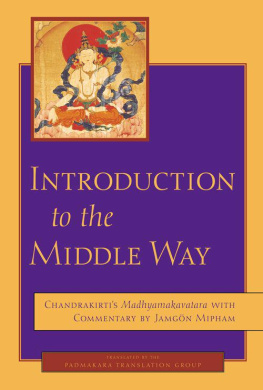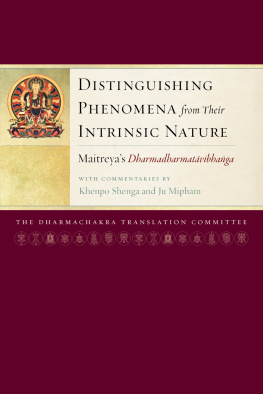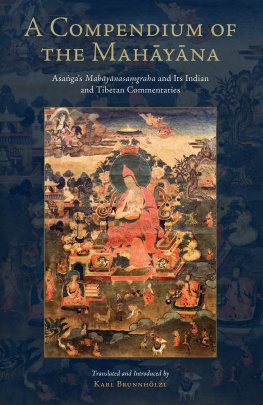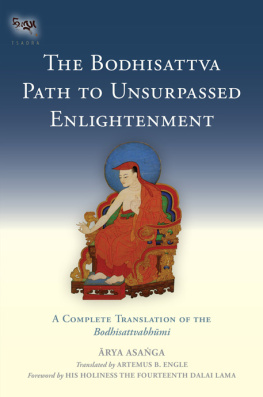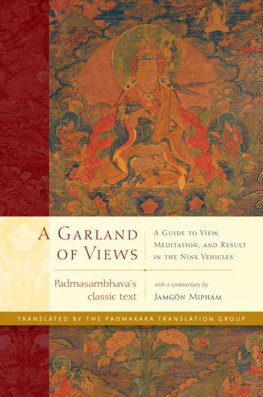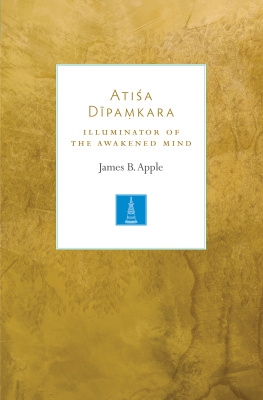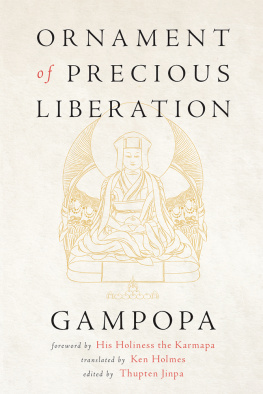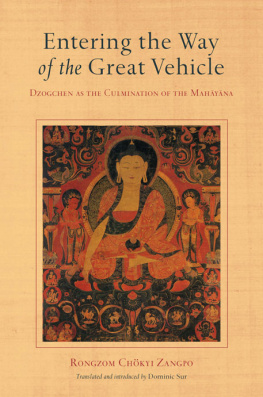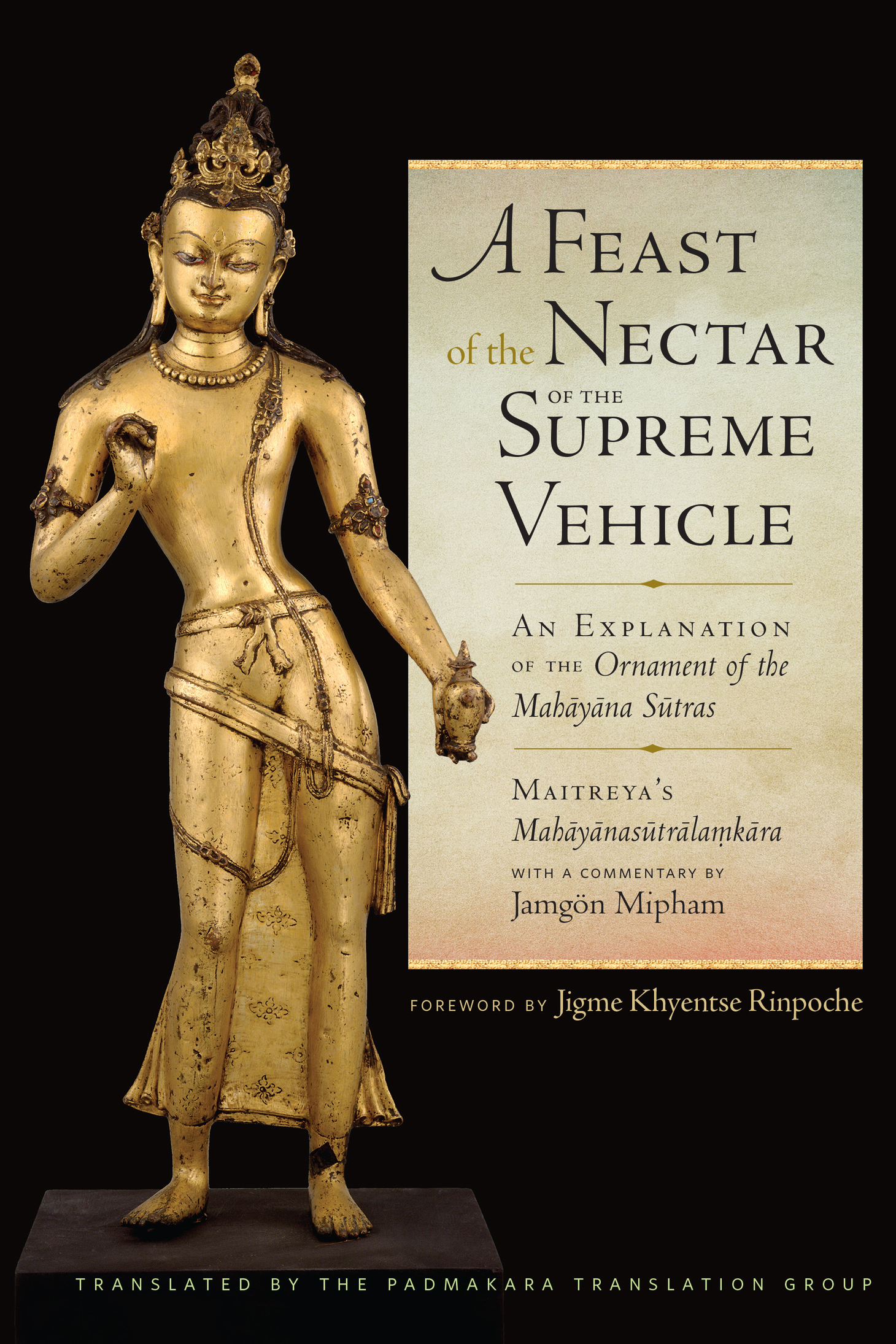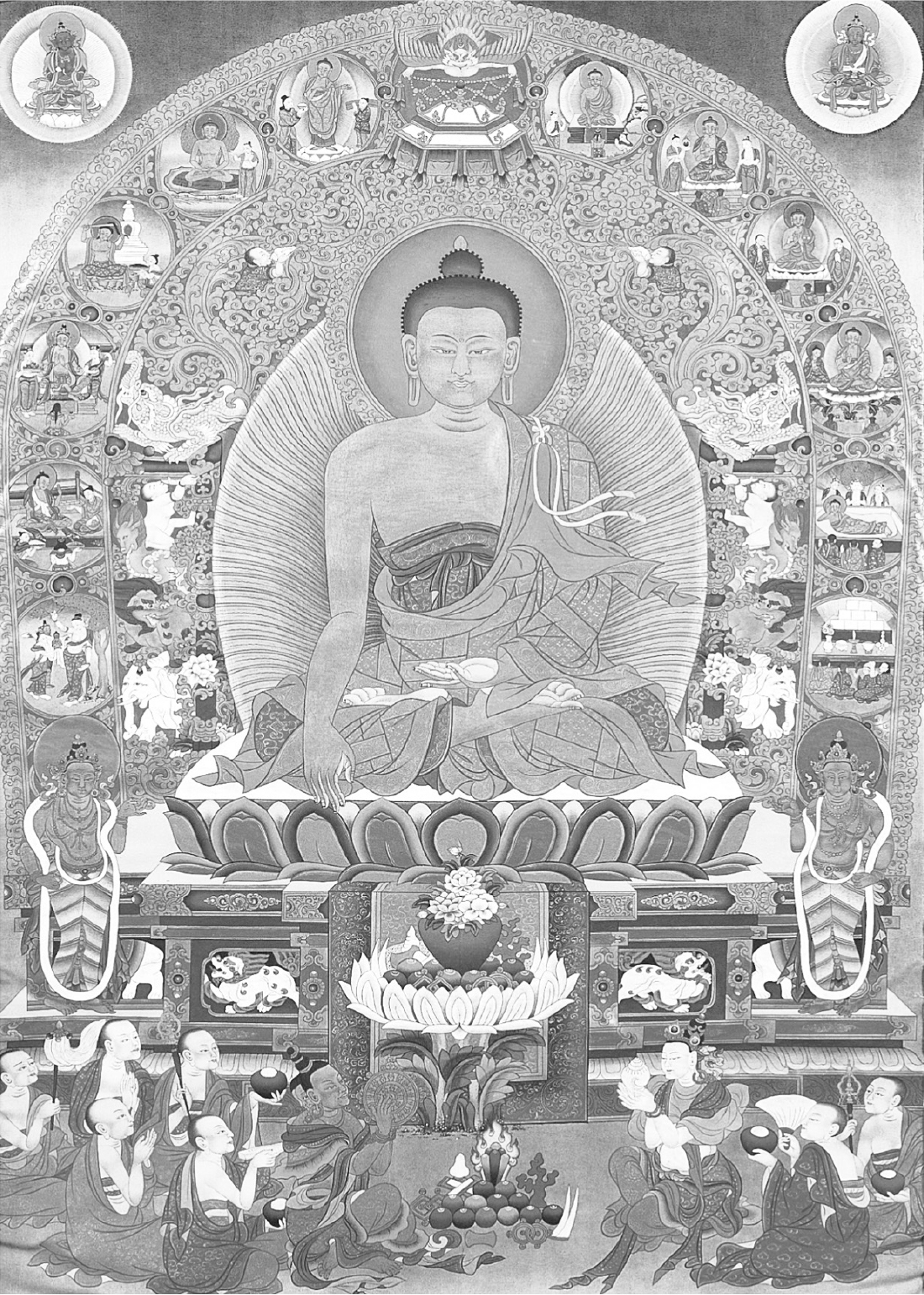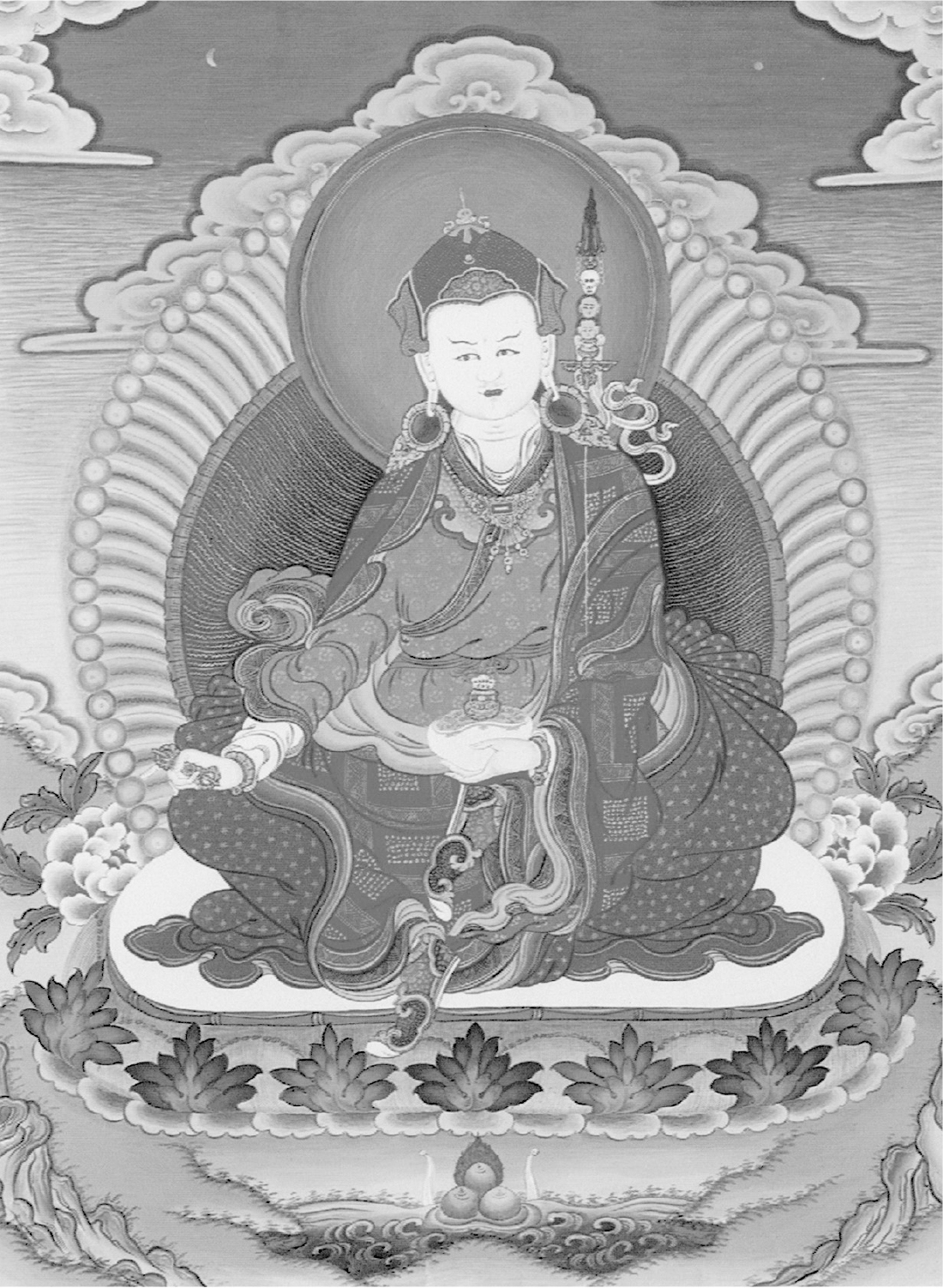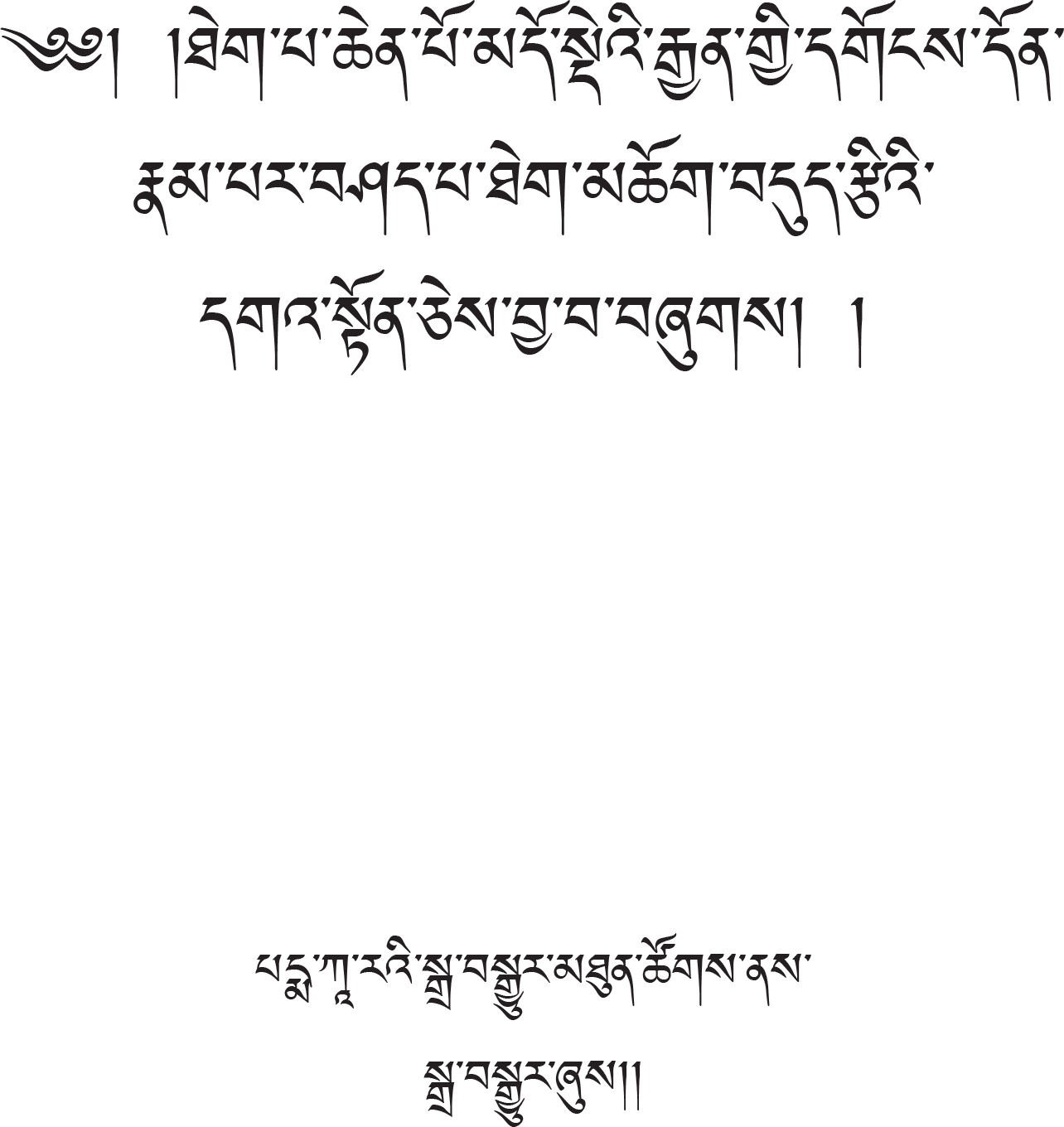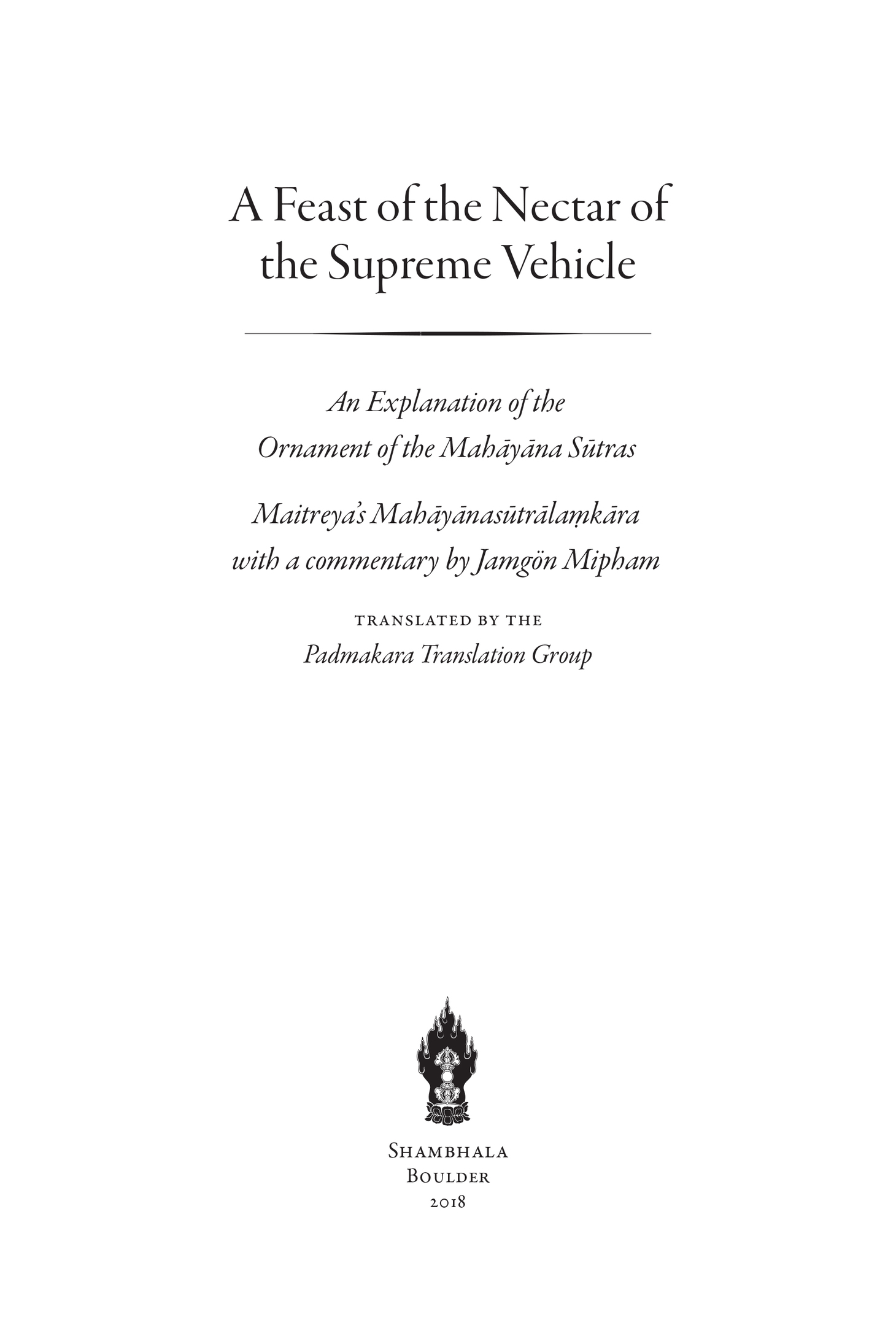P ADMASAMBHAVA , G URU R INPOCHE
Shambhala Publications, Inc.
4720 Walnut Street
Boulder, Colorado 80301
www.shambhala.com
2018 by the Padmakara Translation Group
All line drawings by Olivier Philippot.
Photograph of Kangyur Rinpoche by Matthieu Ricard.
All rights reserved. No part of this book may be reproduced in any form or by any means, electronic or mechanical, including photocopying, recording, or by any information storage and retrieval system, without permission in writing from the publisher.
Cover art: Standing Bodhisattva Maitreya, the Buddha of the Future. Nepal, 9th10th century. Photo: Bruce White. e Metropolitan Museum of Art. Image source: Art Resource, NY.
Cover design: Gopa & Ted2, Inc.
LIBRARY OF CONGRESS CATALOGING - IN - PUBLICATION DATA
Names: Asaga, author. | Maitreyantha. | Mi-pham-rgya-mtsho, Jam-mgon Ju, 18461912, writer of added commentary. | Comit de traduction Padmakara, translator.
Title: A feast of the nectar of the supreme vehicle: an explanation of the Ornament of the Mahyna stras: Maitreyas Mahynastrlakra / with a commentary by Jamgn Mipham; translated by the Padmakara Translation Group.
Other titles: Mahynastrlakra:. English
Description: First edition. | Boulder: Shambhala, 2018. | Includes bibliographical references and index.
Identifiers: LCCN 2017019294 | ISBN 9781611804676 (hardcover: alk. paper)
eISBN 9780834841741
Subjects: LCSH : Yogcra (Buddhism)Early works to 1800.
Classification: LCC BQ 3002. E 5 P 33 2018 | DDC 294.3/85dc23
LC record available at https://lccn.loc.gov/2017019294
v5.3.2
a
The Padmakara Translation Group gratefully acknowledges the generous support of the Tsadra Foundation in sponsoring the translation and preparation of this book.
C ONTENTS
A F EAST OF THE N ECTAR OF THE S UPREME V EHICLE :
T HE C OMMENTARY
F OREWORD
J IGME K HYENTSE R INPOCHE
In an age when science claims to have an answer for everything and is even attempting to prove the validity of Buddhist meditation, while many peoples ideas about different religions and spiritual paths reduce these to simplistic and misleading stereotypes, it is hard to comprehend the true breadth and profundity of the Buddhas teachings. During his lifetime, Buddha kyamuni taught on countless occasions, on many different levels, and to different individuals, in order to help each particular person understand something that would bring him or her closer to enlightenment. For us to consider the vast scope of these teachings is as mind-blowing and awe-inspiring as gazing into the immensity of space.
In the Strlakra, the Buddhas regent, Maitreya, brings this vast array of teachings together, arranging them in an orderly fashion and putting them into perspective so that we can begin to understand them and use them as a path to enlightenment. Of the three principal aspects of the pathview, meditation, and conductthis text, like Shantidevas The Way of the Bodhisattva (Bodhicaryvatra), deals mainly with the view and conduct of the great bodhisattvas, whose sole aim is the enlightenment of all beings. Once we have an inkling of the extraordinary kindness and wisdom of these bodhisattvas, whom we can meet even today as our teachers, we can begin to infer that the incredible qualities and deeds that Maitreya describes are possible.
I hope that this translation of Maitreyas presentation, along with Mipham Rinpoches clear explanation, will help readers to gain a glimpse of the Buddhas message in all its vastness, taking them beyond limited conceptions and inspiring them to practice the path it describes.
T RANSLATOR S I NTRODUCTION

Ornament of the Mahyna Stras is the longest and most wide ranging of the five treatises that rya Asaga received from the Buddha Maitreya and brought back from the Tuita heaven. It is also the work that perhaps most obviously testifies to Asagas mission to spread the message of the Great Vehicle (Mahyna) at a time when the teachings, in particular the Abhidharma, were threatened with decline, for it serves as a veritable manifesto for the Great Vehicle, describing in detail the attractions of the bodhisattva path. Its beautiful descriptions of the qualities of the bodhisattva are widely quoted throughout Tibetan Buddhist literature, and in the monastic colleges of the Nyingma school it is included among the thirteen most important source texts studied in the curriculum. Many Tibetan masters have been inspired to write commentaries on it, among them the celebrated Nyingma scholar Jamgn Mipham (18461912), who was an outstanding proponent of the nonsectarian movement founded by such masters as Jamyang Khyentse Wangpo and Jamgn Kongtrul. It is his commentary, based on an authoritative Indian commentary, that we have chosen to translate here.
RYA A SAGA AND THE F IVE T REATISES OF M AITREYA
The various traditional accounts of Asagas life suggest that he was a man not so much born with a mission as conceived with a mission, for among the people deeply concerned with the situation of Buddhism in fourth-century India was his mother. As a young nun, she bemoaned the fact that she lacked the scholarship and eloquence of the paitas at the Indian Buddhist universities and the meditative accomplishments of Buddhist hermits. She realized, however, that there was one thing she could do that no paita couldbear children, even if it meant taking the drastic step of giving up her monastic vows. Praying fervently that her offspring would be able to make the teachings flourish once more, she proceeded, through successive liaisons with three men, to give birth to three sons who she hoped would fulfill that historic destiny. Of the three boys, the eldest was Asaga and the second was Vasubandhu, who later became Asagas foremost disciple, and they were indeed to make their mark on the development of Indian Buddhism over the next few centuries.
Briefed by his mother, the young Asaga set about his appointed task with enthusiasm. His aim was to seek the help of the future Buddha, the bodhisattva Maitreya, and for this he decided to undertake a meditation retreat, practicing Maitreyas sdhana. After six years, however, his initial fervor had begun to wear off, for he had had not the slightest sign that he was accomplishing his goal. Not once had he even had a dream in which Maitreya appeared to him. Disillusioned, he abandoned his isolated retreat and set off back to the civilized world. On the way, he met a man rubbing an iron rod with a piece of cotton, apparently in the hope of making a needle from it. Amazed that anyone could put so much effort into such a futile endeavor, Asaga realized that it would be a mistake to give up so easily his infinitely more lofty ambition, and he returned to his cave with renewed faith.


